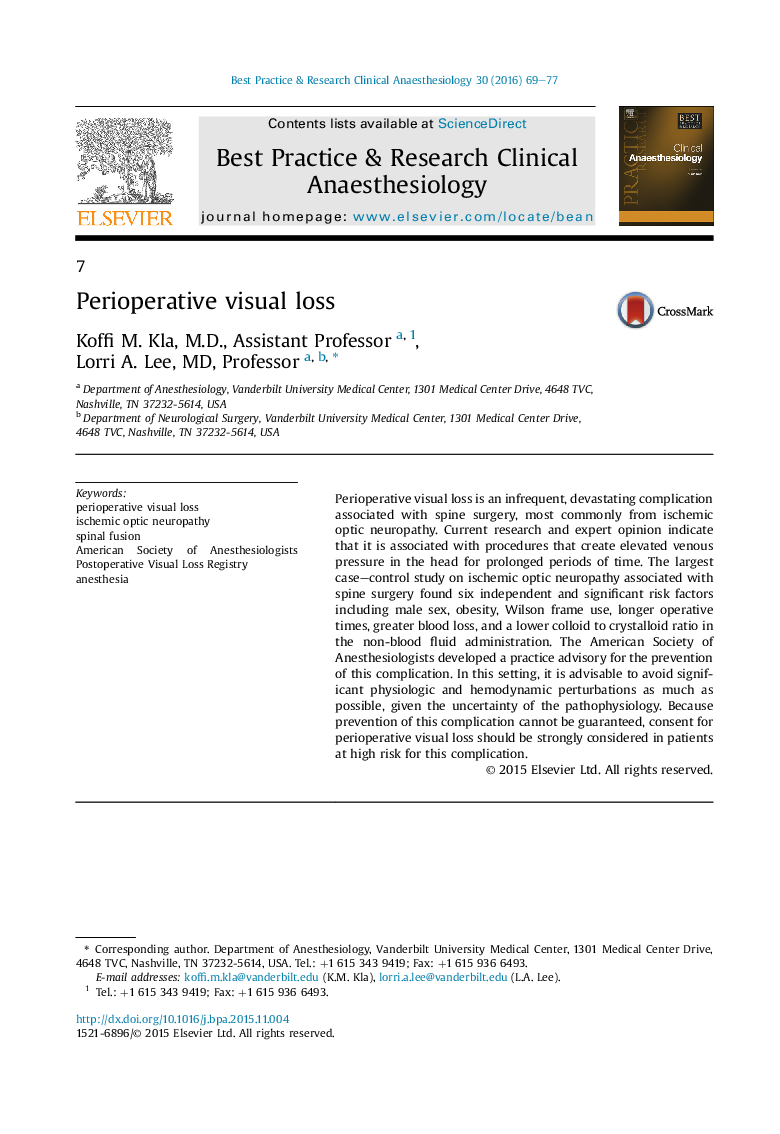| Article ID | Journal | Published Year | Pages | File Type |
|---|---|---|---|---|
| 2748331 | Best Practice & Research Clinical Anaesthesiology | 2016 | 9 Pages |
Perioperative visual loss is an infrequent, devastating complication associated with spine surgery, most commonly from ischemic optic neuropathy. Current research and expert opinion indicate that it is associated with procedures that create elevated venous pressure in the head for prolonged periods of time. The largest case–control study on ischemic optic neuropathy associated with spine surgery found six independent and significant risk factors including male sex, obesity, Wilson frame use, longer operative times, greater blood loss, and a lower colloid to crystalloid ratio in the non-blood fluid administration. The American Society of Anesthesiologists developed a practice advisory for the prevention of this complication. In this setting, it is advisable to avoid significant physiologic and hemodynamic perturbations as much as possible, given the uncertainty of the pathophysiology. Because prevention of this complication cannot be guaranteed, consent for perioperative visual loss should be strongly considered in patients at high risk for this complication.
